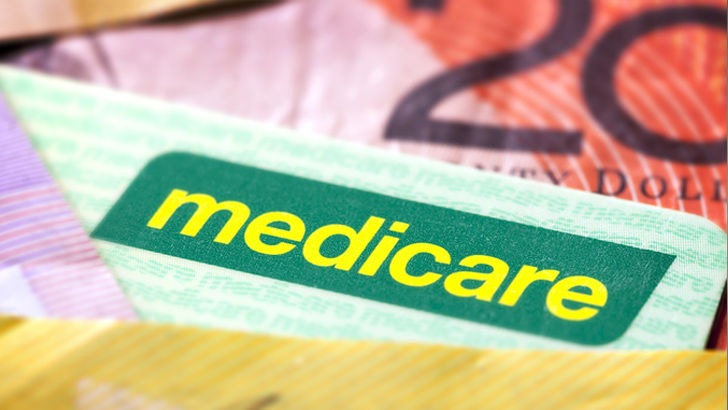What you can expect from the 2017 Federal Budget
By Steph Nash
It's been 12 months since treasurer Scott Morrison's first Federal Budget and it's interesting to look back at what the main measures were and how they were received.
Morrison's changes to the superannuation rules were by far the most significant measures of the last Budget. Despite being met with criticism, the lifetime cap of $1.6 million and the new contributions caps were passed in the senate and are set to become reality on July 1.
Tax reform was the other big aspect of the 2016-17 Federal Budget with Morrison announcing tax cuts for small- and medium-sized businesses.
This was planned to eventually roll out to businesses of all sizes but has since been met with extensive push back in the senate.
The diverted profits tax for multinational corporations is also about to come into effect, which the government hopes will claw back $2 billion of lost revenue from Australia's biggest companies.
It's farewell to 'jobs and growth' this year to make way for the new hero of the budget: housing affordability. The treasurer has been fairly coy in the lead up to the Budget on May 9, with on-again-off-again support for a measure allowing first home buyers to access their super to fund a home deposit, and also tax reform in the way of negative gearing and capital gains tax.
A few things have been made clear.
For one, there will definitely be a welcoming back of former education minister Christopher Pyne's much protested higher education reforms (albeit with a few changes and a different name). And this year Morrison will also be categorising debt into 'good' debt and 'bad' debt which will likely make way for increased infrastructure spending.
To help you get your head around what you should be expecting next week, Money has compiled a collection of Budget predictions from a panel of experts. Stay tuned next week for the big Budget reveal on the Money website and join the conversation on Twitter or Facebook.
HOUSING AFFORDABILITY By Ben Kingsley, chair of Property Investment Professionals of Australia (PIPA) and founding director of Empower Wealth
Capital gains tax exception changes
Unless the government does a complete backflip, negative gearing is safe, but I expect to see some tinkering with the capital gains exemption percentage. Currently this is sitting at 50% concession on income, if you sell after 12 months of holding.
Personally, if there is going to be some change in this space, I'd focus in dis-incentivising speculators and get-rich-quick spruikers by introducing the exemption to 10% for the first two years of ownership, then 25% up until five years of ownership and then 50% after this.
This ensures mum and dad investors are providing good rental accommodation options within the market, whilst also benefiting from the steady value growth and passive rental income for their retirement.
Yet the rumours doing the rounds are that it will be a blanket reduction to 40% after 12 months of ownership.
One-off tax break for seniors who downsize the family home
When you climb the property ladder, your first instinct is to hold onto that beautiful home. Your kids might agree too, if they are one day going to inherit it.
Couple this with the dis-incentive to sell as the sale proceeds could then be taxed as part of your superannuation pension cap, one can understand a reluctance to sell. Yet if baby boomers were to look to sell-up en masse, this would have a positive effect on increasing the supply of property in many well-established areas.
Such a policy initiative, whereby the vendor gets a one-off exemption to allow these funds to be transferred into their super pension to help fund their retirement, may be enough of an incentive to some sell.
But how would it work? Will the government allow a cap of say $500,000 per owner to help boost up super savings and make this one off transfer exempt from the $1.6m tax free cap?
And will that be enough of an incentive to sell-up? I suppose every little bit of extra supply helps and if that means a few more folk are self-funding their retirement, taking some pressure of the government, it can't hurt, can it?

Property vacancy tax for foreign investors
Foreign investors buying Australian residential real estate has provided much support to the Australian economy.
We are seeing capital flow into all parts of our economy and plenty of direct and indirect jobs created from this investment. But again, in a high demand marketplace, where locals are saying they are missing out, something was destined to change.
Taking the lead from a Canadian initiative, followed by the Victorian government, I predict the treasurer will announce a tax of foreign owners who chose to leave their properties vacant instead of adding them to the rental pool.
In the case of the Victorian government, it is taxing the owner 1.5% of the value of the property annually.
It's still uncertain whether the federal government would adopt a percentage or flat fee. I'm tipping a flat fee of $3000 for units and $5000 for houses per year.
No one knows for sure how many properties are vacant all year round. I've seen some reports quoting upwards of 300,000 properties. But one thing is for sure - it will be a revenue raiser for government and it will try to claim some political mileage as it should add to the supply of new rental stock to the market.
EDUCATION Conor King, executive director, Innovative Research Industries (IRU)
Higher Education Package
The government has released its new Higher Education Package.
The previous package (rolled out in 2014 by then education minister Christopher Pyne) offered universities the chance of greater revenue through setting student fees at the level they thought necessary, while the government reduced its contribution by 20%.
In that package there were opportunities for universities, a large saving for government but students faced paying more largely to get the same outcome.
The Pyne package failed in the Senate, mostly due to the risks of unlimited student fees. The new package shifts the nature of the changes. Its main proposals are:
- for students to pay more, a further 1.8% in 2018 and each year to 2021 meaning a 7.5% increase(from $480 to $795 a year extra); and
- for government base funding to reduce by 2.5% in 2018 and a further 2.5% in 2019.
The balance between the extra money from students and less from government means that universities lose base revenue of about 1.4% in 2018, and similar amounts in future years.
The government package increases the pressure on universities to work well for their students by tying money to improvements in student retention and passing of units.
This will involve 7.5% of the government grant, a significant amount to be dependent on targets. The one safeguard is that the targets will be set university by university based on each improving past outcomes.
The government will also retain the Higher Education Participation and Partnerships Program, which rumours had under threat. It will pay it in future at a set amount for every student from a low socio economic background, letting funding grow as enrolments grow. This program has been very important for letting universities support all the students they enrol.
Students who use the Higher Education Loan Scheme to pay their fees will make payments when their income reaches $42,000, down from $54,869. This applies to all who have HELP balances. The threshold was at similar levels under John Howard. It forces earlier payments but previously did not deter people from enrolling.
Arrangements will also change for students in postgraduate awards including masters' degrees. To have a government funded place, with low HECS charges, students will need to win a scholarship which they can use with any university. There is no detail yet about how this will work.
The big question is will the Senate support this package? It will not be an easy outcome for Senator Birmingham to achieve.

EMPLOYMENT By Shane Oliver, chief economist, AMP Capital
Boosted infrastructure spending to lead to more jobs
The government's rebooted infrastructure spending program - focused on airports, roads and rail - is likely to be touted as helping underpin a lift in jobs growth to around 1.5% in the years ahead. Recent jobs indicators have been mixed with a slowing in overall employment growth to around 1%.
But by refocussing debt on "good" and "bad" debt the government plans to free up some of the constraints around taking on new debt to drive an uplift in spending on infrastructure. If it comes to pass this should be good news for workers in the construction sector as well as building materials.
The only reason for caution though is that a year ago the government promised $50 billion in infrastructure spending to 2020 and so it's unclear whether this Budget will just repackage that spending.
Good news for wages growth
The Budget is likely to forecast a lift in wages growth to above 3% by 2018-19. This would be great news if it actually occurs and provide a welcome boost to household income.
We hope this transpires because through 2016 wages growth was running at a record low 1.9% which is not great if we want to see stronger growth in consumer demand in the economy and hence strong business investment.
The problem has been weak full time jobs growth leading to poor bargaining power for workers. It's doubtful that the Budget can do enough on its own to turn this up but increased infrastructure spending can help.

Lower unemployment
The Budget is also likely to forecast a fall in unemployment to 5.25%. In recent months the unemployment rate has increased again to 5.9%.
If growth improves as the government is forecasting then this should help reduce unemployment and will be good news for the unemployed.
Perhaps of greater concern though is the continuing high level of underemployment at around 8%. This needs to be reduced if wages growth is going to pick up.
HEALTH By Dr Michael Gannon, president, Australian Medical Association (AMA)
Lifting the Medicare freeze
The major focus of the health Budget will be what the government does with the freeze on Medicare patient rebates, which has been in place since 2013 and locked in until at least 2020 - forcing increases in costs for Australian families to see their doctor.
Informed speculation from the press gallery suggests that the government will announce a staggered lifting of the freeze over three years, beginning with GP concession patients from July 1, 2017.
While preferring an immediate lift across the board, the AMA will support this if it happens. The cost to the government is said to be more than $500 million.
The government's review of the Medicare Benefits Scheme (MBS) is ongoing, so may just warrant a passing mention in the Budget.

Push to prescribe more generic medicines
The other reported big move is to introduce new prescribing software for GPs that will default to generic medicines ahead of more expensive brands.
The AMA has been assured that this system will not be mandatory, and doctors will be allowed to prescribe brand medicines for patients who need them. We will support this move, and call for any savings to be ploughed back into health. Media reports put the savings at $1.8 billion.
Funding, insurance and prevention
Big areas of health that have not been mentioned in the speculation are public hospital funding, private health insurance (PHI), and prevention. The prime minister has declared prevention a priority, especially to combat obesity, so keep an eye out for an announcement of some kind.
The AMA will be keeping a close eye to ensure that Indigenous health funding is at least maintained, but preferably increased.
SMALL BUSINESS
Peter Strong, CEO, Council of Small Businesses of Australia (COSBOA)
Black economy interim measures
The government is very likely to claim Budget income against new procedures to be announced around better management of the black economy. These new procedures will be aimed at decreasing the use of cash to dodge tax. This includes paying or receiving cash payments for wages and cash payments for goods and services.
There is a clever way of managing the process which is through e-invoicing which is a process that removes a lot of paperwork and the need to re-type invoice information or create PDFs for lodging of invoices.
This streamlined procedure will save businesses billions in processing costs and as a side benefit it will allow the ATO to more efficiently audit businesses when necessary.
Indeed we expect that businesses that use the e-invoicing process will be less likely to be visited by the ATO, those that don't user relevant software will be more likely to be visited.
Home phone and internet to be exempt from Fringe Benefits Tax (FBT)
The FBT issue is an ongoing concern for small businesses. It seems odd that we promote working from home as a good thing for employees yet punish businesses that pay for home access to the internet by making them pay FBT.
$20,000 'instant asset write-off' to be extended
There is an opportunity for the government to normalise this component, embed it as a continuing allowance for business, not just for a year or two, and get more money moving through the economy.
The increase of a definition of small business to $10 million turnover means that about 100,000 more businesses will be able to access the instant tax write off.
Companies this size will be able to use this to expand their businesses by purchasing new equipment. This will in many instances create employment opportunities or enable casual and part-time workers to become full time.
This size companies can also take better advantage of the drop in company tax far better than companies who turnover less than $2 million.
Combining the instant tax write off with the company tax cut will certainly create more sales in the economy, adding to GST revenue and increasing business for suppliers.
No more late payments for contractors and sole traders
We expect the government will include provisions for assisting small business providers to government get paid faster. Currently federal government agencies are pretty good at paying on time but if they can pay faster, say within five days of the receipt of an invoice then this would assist with cash flow for small businesses as well as get money flowing faster through the economy.
The government also has the opportunity to ensure that its larger suppliers also pay small business contractors within 30 days rather than the 60 to 120 days that appears to be far too common a process.
TAX By Liz Russell, senior tax manager, Etax
Tightening work-related deductions
Work-related tax deductions are used by many taxpayers to legitimately reduce their taxable income which in turn leads to a bigger tax refund at tax time.
Public ATO comments suggest that it may seek to raise tax revenue by tightening or even removing some common deductions that many Australians claim. While this could lend a boost to government coffers, questions may be raised about equity and fairness in taxation for working Australians.
Work-related car expenses is a specific tax deduction that the ATO is likely to focus on.

Investment property deductions cap
Watch for an investment property 'deductions cap' which might put a total dollar limit on your investment property deductions.
Higher education reforms
A 2.5% reduction in university funding aimed at saving $2.8 billion over four years.
In addition to fee increases, students should watch for a drop in the income level where you're required to start HECS/HELP repayments.
Currently, on your 2017 tax return make compulsory HELP repayments if your income is above $54,869. Under discussed changes the threshold could fall to $42,000 which means about 200,000 more taxpayers will need to start repaying education debts sooner.
Follow @moneymagaus on May 9 for the latest from the Federal Budget.
Get stories like this in our newsletters.



